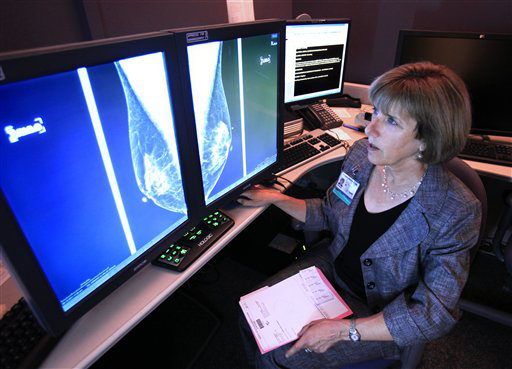
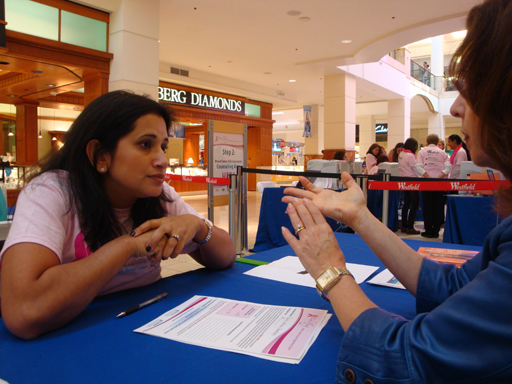
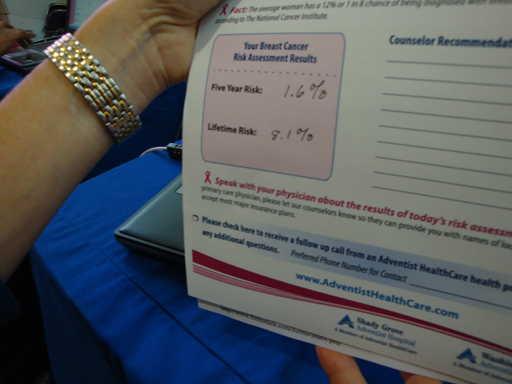
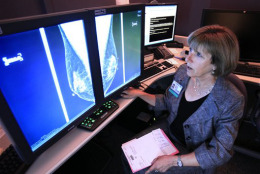
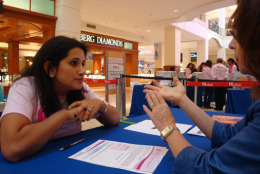
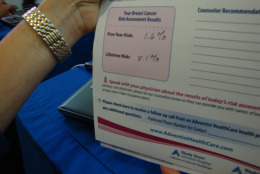
Paula Wolfson, wtop.com
WASHINGTON – It is a frightening statistic: Fifty percent of American women who should get annual mammograms do not.
During National Breast Cancer Awareness Month, which starts Monday, one of the goals is to get the message out that mammograms can save lives.
Dr. Paul Forsythe, medical director of the Department of Radiology at Washington Adventist Hospital, says mammogram can detect breast cancers that are as small as a quarter or a half inch.
“The cure rate is virtually 100 percent when that happens,” he says.
But if a tumor goes undetected until it is an inch or two, the odds radically change.
Judith Gurdian, an obstetrician and gynecologist in Rockville, says there is a huge shift.
“Early breast cancer has a very high survival,” she says. “If you don’t diagnose the breast cancer until someone is stage four, it is less than 15 percent.”
The CDC says women should start annual mammograms at 50. But many doctors, including Gurdian, prefer the guidelines set by the American Congress of Obstetricians and Gynecologists, which recommends annual mammograms starting at 40. If a woman has extra risk factors, screening can start much earlier.
Forsythe says he has seen breast cancer patients in their 20s. In lieu of mammograms, he says women that young may want to opt for an ultrasound. He also recommends that women of all ages – 20s, 30s, 40s and beyond – practice regular breast self-exams.
Women’s health specialists say there are three levels of breast cancer detection: self-exams, annual checks by a doctor and mammography.
“We’re kind of like the little Dutch boy with the dike, trying to plug all the holes,” says Gurdian. “The more things that we do to be self-protective, the better our opportunity is to pick up an early diagnosis of breast cancer.”
Radiologists have new tools today that weren’t widely available a decade ago. Most mammograms are now digital, ultrasounds are more refined and there are special screening methods for women with dense breast tissue.
But experts in radiology say all of this technology is meaningless if patients don’t take charge of their breast health.
“We really have a lot of tools,” Forsythe says. “But if women don’t come in and get the procedure, we can’t help.”
The National Cancer Institute predicts there will be roughly 230,000 new breast cancer cases in the United States this year and almost 40,000 breast cancer deaths.
For more information, visit the National Breast Cancer Awareness Month’s website. The National Breast Cancer Foundation also has an app, along with information on its site about how to set up an early detection plan.
Follow WTOP on Twitter.
(Copyright 2012 by WTOP. All Rights Reserved.)







